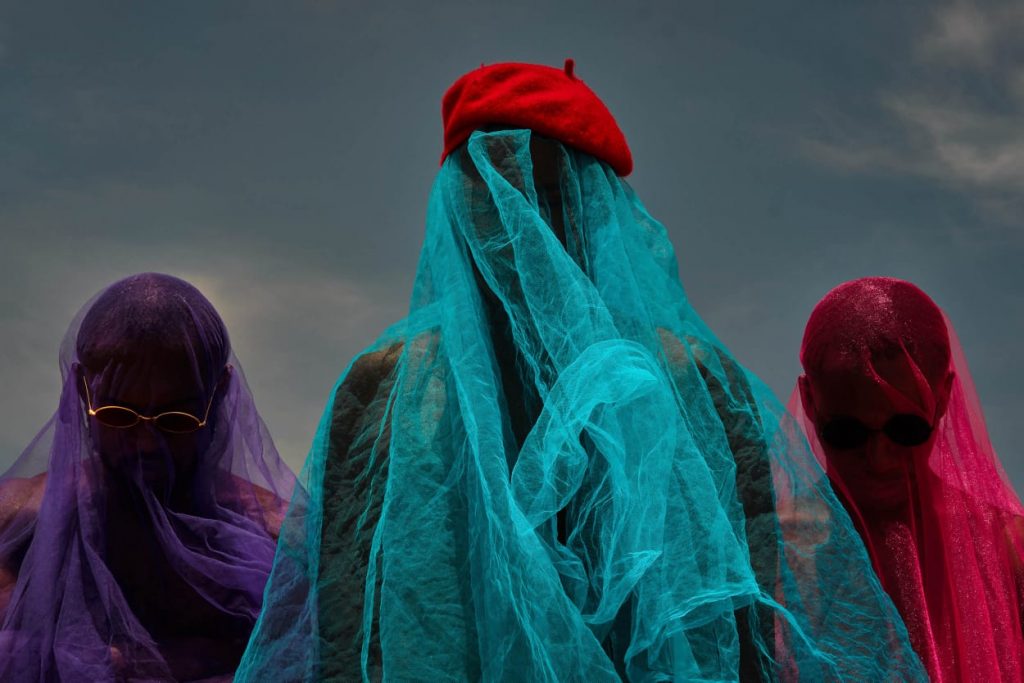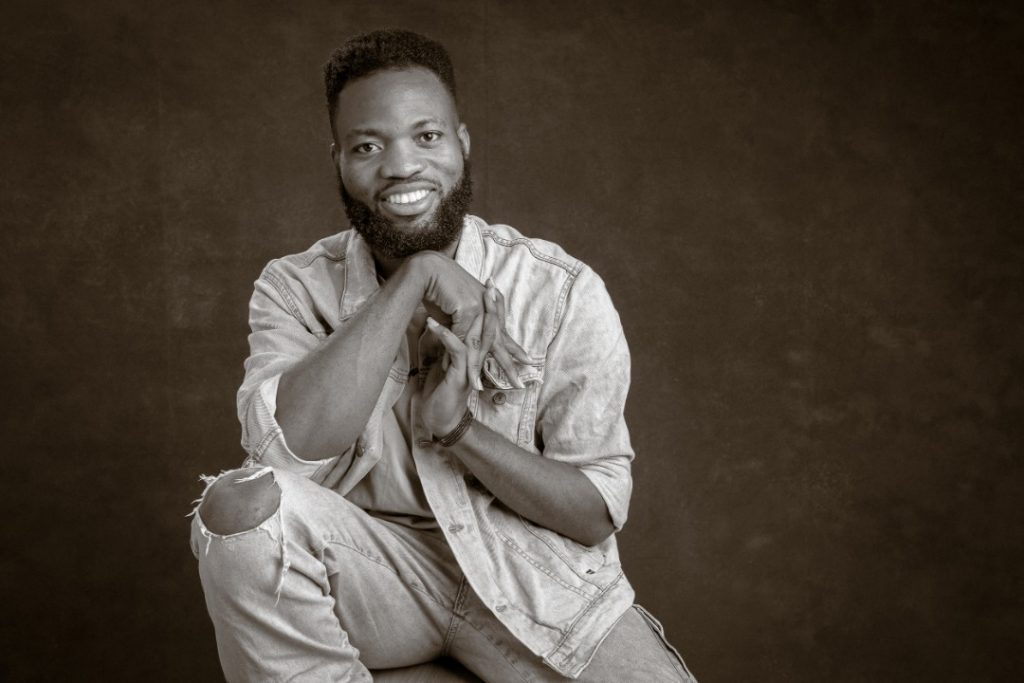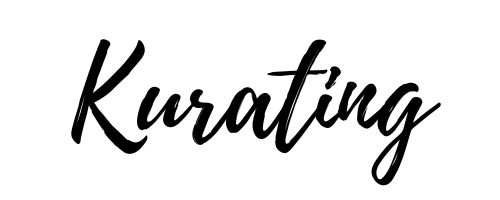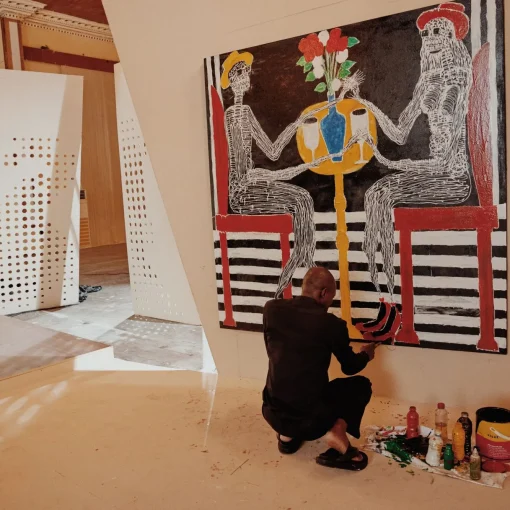
Neec Nonso is brilliant, if a little weird. “555555,” he will often type in response to a joke. If you are a typical Nigerian and interacting with him for the first time, you’d probably be weirded out or, at the very least, confused. The simple explanation is that Thai people pronounce five as “ha”. So when the Thai laugh while talking online, they type “555” for “ha ha ha”. Neec’s uncommon written laughter, imported from Thailand and his signature for years, is emblematic of his sometimes odd disposition.
Neec was born in Aguleri and spent his early years in the southeastern village of Nigeria, which influenced his project Aguleri Stories — a masterful collection of photos and words from the Igbo village famous for its boundary disputes. From colourful pictures of masquerades celebrating ancient festivals to fierce young men wielding rifles in defence of their village boundaries and playful children enjoying the camera’s attention, this collection tells vivid inside stories of Neec’s birthplace.
After a few years in Aguleri, his parents sought greener pastures in urban Abuja, as families in Nigeria are wont to. Neec says he picked up the English language there, which at first seemed a mystery. “I remember when we first arrived, I would ask ‘what are they saying’ in Igbo”. Then, they moved to Lagos after his mother refused to continue the ‘visiting husband’ arrangement that saw his father ply trade as a clothes seller and part-time pastor in Yaba Lagos, away from family.
Neec remembers himself as a very observant child, mindful of many of his parents’ actions and inactions, particularly his mom, who is now of blessed memory. One time he gave a neighbour some of their table salt and got scolded. His mom, whom he fondly remembers, instructed him to “say we don’t have salt next time.” It seemed like hypocrisy to young Neec, “the bible teaches us to give.” Church values weigh heavily on his upbringing and are responsible for his moral compass, even to date, despite now being agnostic.
While interested in traditional religious practices from a storytelling perspective, Neec sees himself as indifferent to organised religion. A sceptic. The indifference and scepticism crept up on him just after secondary school. They developed because he didn’t have “any real encounter” to make him believe in the teachings of any particular organised religion. Despite being the church keyboardist, Neec welcomed leaving for University as an escape from being a ‘pastor’s son’ and having to attend church.
Becoming Neec the artist
Early on, his mindfulness made colours, shapes, patterns and words jump at him. Especially words. He was in love with literature, so much so that when he failed to make his school-leaving grades on the first attempt, his father blamed it on the literature books he was “always reading.”
But Neec never really foresaw life as a visual artist or photographer. As a writer, perhaps, given the love of literature. But not a visual artist.
His early foray into photography was as a hobby, taking pictures with a Sony Ericsson camera phone and posting them on Facebook. Around that time, he created #EveryPictureIsAstory, where he created photos, had his friends write literary captions and shared them on social media. The feedback was great.
“I have a shot at this”, the artist told himself in 2016, and that was his conscious leap into professional photography. He started the long process of developing his skill and knowledge. “I attended all the free photography programs I could find…I met close to a thousand photographers around 2016 by attending all sorts of events in a bid to develop myself.”
Meeting people who recognized some of his works from social media posts greatly boosted his morale. Awards for his phone photography also raised his confidence. Then around that time, a cousin gave him twenty-eight thousand naira to buy his first ‘proper’ camera, a ‘point and shoot’ Fujifilm X10. His photography career took wings.
Creating visual gems out of the everyday
If you’ve seen any of Neec’s works, you already know how evocative they can be; whether haunting, depressing, or animating, there’s something to be felt. So, one wonders, how does he find inspiration for these works?
Many of his ideas just pop out, he says, without any serious preparation, although his environment or real-life events often inspire them. After repeatedly noticing graveyards, a recent project about the afterlife came to him at Ikogosi in Ekiti state.
“I’m always looking for different ways of telling a story. When I encounter an ingenious way of executing an idea, the urge to do that work becomes really strong.” So, at this point, he starts looking for a sociological or philosophical perspective to imbue it with some sort of messaging for his audience.
For example, at the outset of the Covid19 pandemic, he, like many others, was anxious and wondered if the world was facing a biological apocalypse. This led to the imagination of a post-apocalyptic world with a new fashion inspired by face masks. From this, Neec created an eerily remarkable body of work featuring persons wearing coloured nets over their heads. Even with a thousand words, the images are hard to describe – see for yourself.
“I try to see ideas where people don’t see ideas by being very observant,” a reference to his mindful personality. “And then, I spend a lot of energy and time connecting these ideas to my personal experiences.”
What’s a brilliant work of art to Neec? “Everyone experiences it [the idea behind the work], but no one sees it or thinks it worth creating until someone else creates it.”
An exciting technique Neec has taken to recently is self-portraiture. You see images of him in many of his recent works, and when asked why, Neec says he’s developing a visual language for himself, and this technique is an element of that. But there’s also the convenience of not needing models from whom you need consent and the sundry logistics of photographing other people for personal projects. Interestingly, this technique works just fine for Neec – one might have expected monotony from seeing the same person across different images, but that is not the case.
He is definitely one artist to watch.
In a world where nothing is new under the Sun, as the saying goes, Neec’s determination to create extraordinary art out of the ordinary sets him on the edge of things where the most creative outcomes tend to come from.





